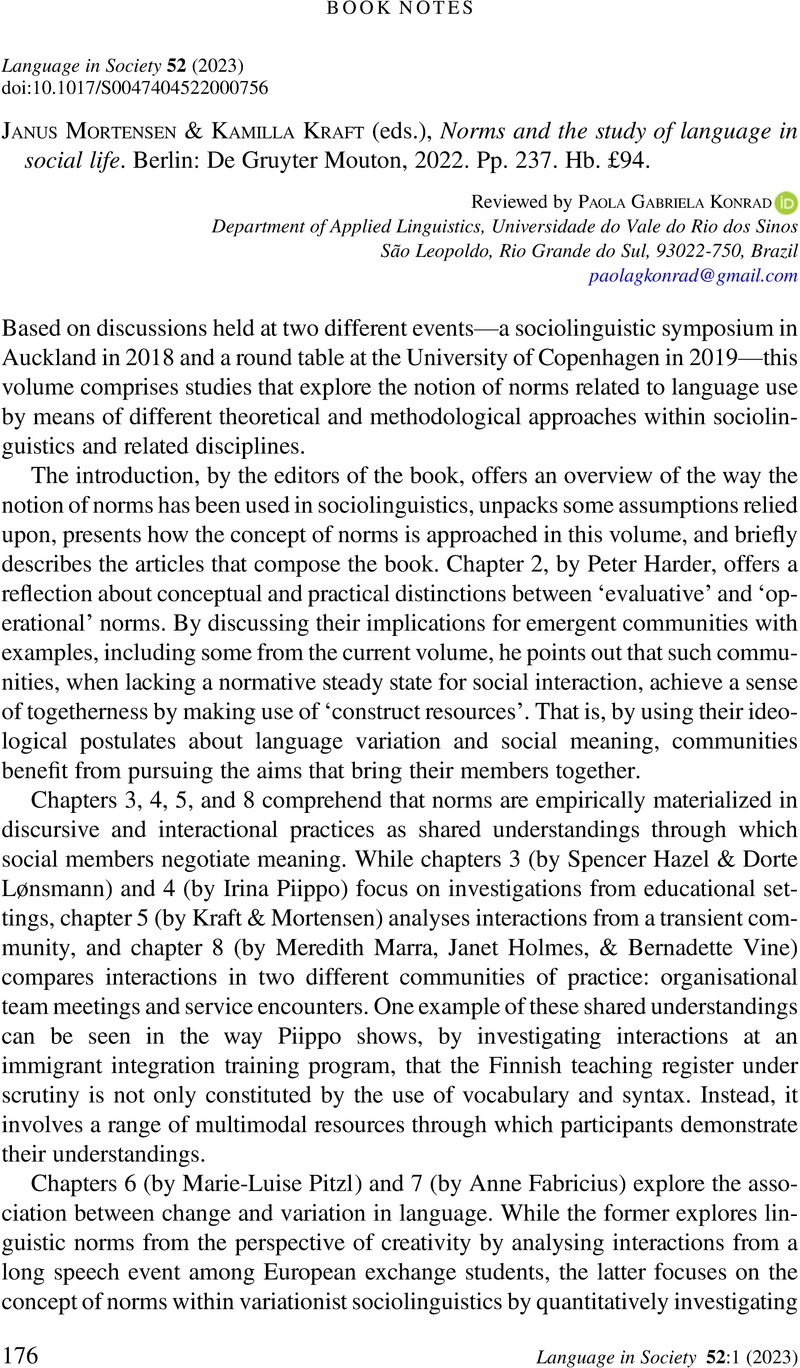No CrossRef data available.
Article contents
Janus Mortensen & Kamilla Kraft (eds.), Norms and the study of language in social life. Berlin: De Gruyter Mouton, 2022. Pp. 237. Hb. £94.
Review products
Janus Mortensen & Kamilla Kraft (eds.), Norms and the study of language in social life. Berlin: De Gruyter Mouton, 2022. Pp. 237. Hb. £94.
Published online by Cambridge University Press: 03 February 2023
Abstract
An abstract is not available for this content so a preview has been provided. Please use the Get access link above for information on how to access this content.

- Type
- Book Notes
- Information
- Copyright
- Copyright © The Author(s), 2023. Published by Cambridge University Press



